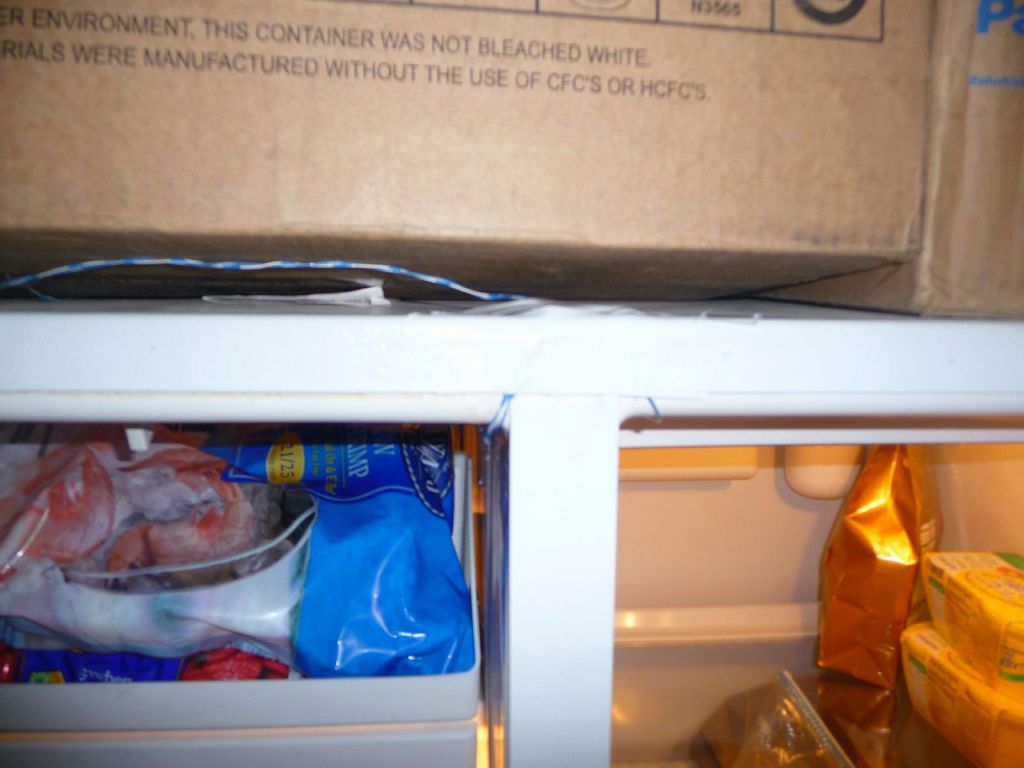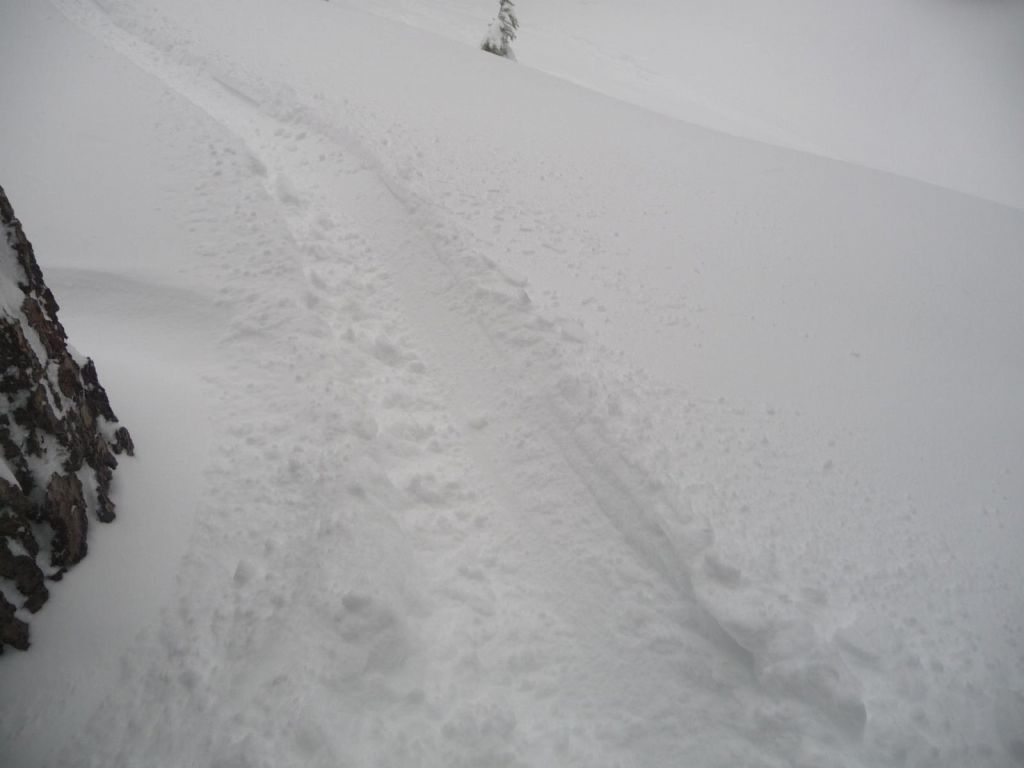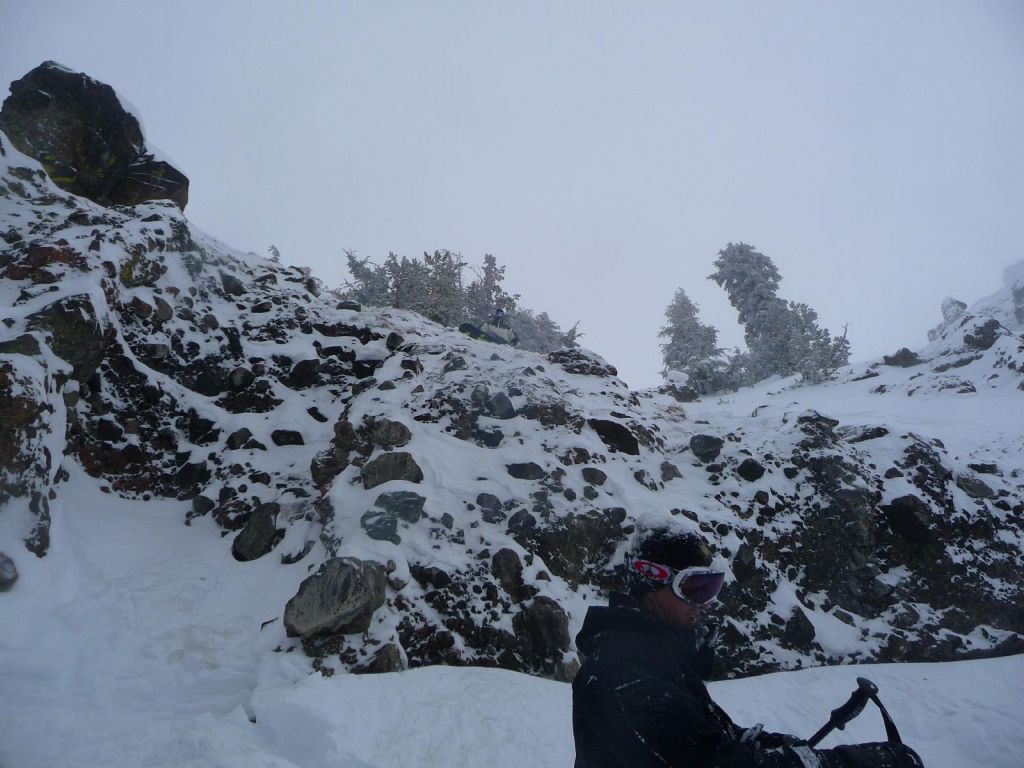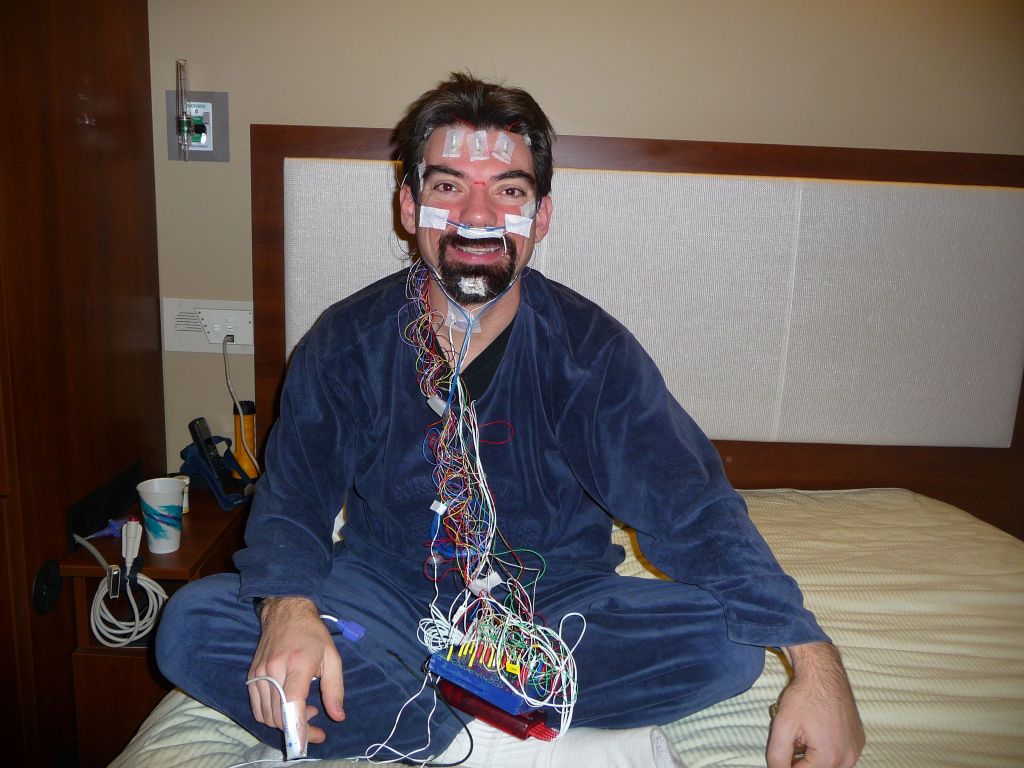Temperature logging
I had basic temperature logging via the HAI RC-80 thermostat code I co-maintain which polls our thermostats for temperature (along with other settings like whether they are running). Other info on the RC-80 thermostat can be found here, just note that they cost about $50 used on Ebay.
Our house is a little different from the average: we have a sub-zone in the master bedroom which is basically a second big vent going directly from the HVAC system to the bedroom. The bedroom has an RC-80 which turns on the HVAC system and opens the bypass vent when the master bedroom temperature needs to be adjusted, however there is still air going to the rest of the house too, but since a lot goes to the bedroom, it gets to temperature more quickly. So you may ask why the subzone is not just a separate zone and that's because our HVAC system is too old, cannot be run a less than full power and would get damaged if its output was only sent to our bedroom.

the interesting part is the added wires for the serial port
The main zone is controlled by an RC-90 (which I use as a regular RC-80). When it turns on, the entire house gets air, including the master bedroom through its smaller vents.
The little trick is that the zone board (which gets input from both the RC-90 and RC-80) is configured to run both zones for 2 minutes after the heating or cooling has stopped (probably to recirculate the air, even in the unused zone).
The one nice thing is that the HAI thermostats tell me what they are telling the hvac zone board, so I can tell when the command was sent, for how long and compare with the HVAC output with temp sensors. The thing that is not as good is that the temperature I get back from the HAI thermostats does not have any decimals (as much as I hate Fahrenheit, I log temps in Fahrenheit because with integer only temperatures I get somewhat better resolution in Fahrenheit than in Celsius).
Here's a good example graph showing combined data:
The graph shows the bedroom HVAC being activated (orange) with the resulting rise of both temperature probes since the subzone has to activate the main zone too). When the main zone is turned on (red), the subzone vent only shows a slight rise in temperature due to leakage in the valve, except in the last 2 minutes right after the HVAC system is turned off but the fan left on: you can see the vent being opened right after the HVAC is turned off.
You can compare with the simpler graph based just off data from the HAI RC-90 and RC-80 and data gathered from the misterhouse HAI code I improved. The following graph shows AC being turned on for the main house and the master bedroom after that:
Since the 1°F resolution of the HAIs is not good enough for nice graphs, this is where the 1-wire DS18B20 temp sensors come in. In most rooms I just have them plugged into the wall via Cat-5 (more details below) and in order to save having to make another hole in our ducts, this is how I measure the main duct temperatures when air is being blown :)
Findings
So that's for the HVAC system but after that I was curious to know:
Anyway, that's enough graphs for now, if you want more (and make your own), here is a link to a list of all the graphs.
1-Wire Setup
For temperature logging throughout the house and outside, the recommended solution is to use Maxim/Dallas 1-wire network (which is really 3 wires: ground, signal, and 5V which can be shunted back to ground if you don't need to measure extreme temperatures).
I'm not going to give a full description of everything since others have already done this better than me, but there is a fair amount of outdated information out there, so let me fix some of it (written as of 2009/12):

DS9490R-A aka DS2490 USB 1wire adapter plugged in powered USB hub, and DS9097U serial adapter plugged into USB to serial adapter
A few places I found:
- http://www.aag.com.mx/aagusa/index1.html, a good place to find the TAI8595 6 Channel 1-Wire HUB.
- http://www.ibuttonlink.com/, for instance you can find the DS18B20 there.
- Hobby Boards only seems to have the old DS18S20 but look for DS18B20 later or pick them up from ibuttonlink. They also have the DS9097U serial adaptor, and the 6 channel hub. Warning: Hobby Boards does not accept any returns, so know what you need before you buy it. They do have a nice 1-Wire Tutorial and list of equipment available.
- Another source still: Newark.com

the center pair is reversed due to the phone cable, the middle pin is actually signal, while 1 and 3 are ground and power shunted together
You can find wiring details on this page, or in a nutshell, my cheat sheet below:
pin 2 (RJ11)/pin 4 (RJ45) -> 1-W/DATA (DS18B20 pin 2 ) blue wire pin 3 (RJ11)/pin 5 (RJ45) -> GND+VDD (DS18B20 pin 1+3) white wireNote that the Maxim documentation gives you incorrect pin numbers because they count RJ11 pins in the opposite order from what's standard as per wikipedia.Cat 5 wiring to a plug where 1-wire is looped back from the blue pair to the green pair: 3 1-W back -> green/white 4 1-W -> blue 5 GND -> blue/white 6 Gnd back -> green
I personally made my own cat-3 cable with my crimping tool and simple wire. That's the best way to know it's wired right (and you only need 2 wires anyway, the center pair)

you can see my Cat-5 cables coming from multiple places in the house and being daisy chained together (I use the blue pair to get there and the green pair to come back
Digitemp Setup
Update at this point, I would not recommend using digitemp anymore unless you only ever plan on using DS18S20 and DS18B20 temp sensors, as this is mostly what digitemp supports (it does support one single humidity sensor too, but only with the serial interface, not the USB one). Long story short, if you're planning on doing anything more with 1-wire, you should invest the little extra time and set yourself up with owfs instead, which I've described in my later Temperature, moisture, humidity, and UV monitoring and graphing with 1wire devices, owfs, and cacti blog post.
First: why would I use digitemp and log to a file from cron (which I then re-read and process for graphing and other uses) instead of using built in support in misterhouse? The reason turns out to be that I just don't want to lose temperature samples if misterhouse dies or if I'm hacking on it and have it down for a while. Simpler is better and more reliable in this case :)
USB:
On linux you may have to unload the kernel support for this USB adapter: rmmod ds2490Then do a quick scan: gargamel:/tmp# digitemp_DS2490 -w DigiTemp v3.5.0 Copyright 1996-2007 by Brian C. Lane GNU Public License v2.0 - http://www.digitemp.com Found DS2490 device #1 at 003/005 Turning off all DS2409 Couplers ... Devices on the Main LAN 1080BAED010800EA : DS1820/DS18S20/DS1920 Temperature Sensor 28D813060200000F : DS18B20 Temperature Sensor 812C282900000044 : Unknown Family Code
Then generate a config file: gargamel:/tmp# digitemp_DS2490 -i DigiTemp v3.5.0 Copyright 1996-2007 by Brian C. Lane GNU Public License v2.0 - http://www.digitemp.com Found DS2490 device #1 at 003/005 Turning off all DS2409 Couplers ... Searching the 1-Wire LAN 1080BAED010800EA : DS1820/DS18S20/DS1920 Temperature Sensor 28D813060200000F : DS18B20 Temperature Sensor ROM #0 : 1080BAED010800EA ROM #1 : 28D813060200000F Wrote .digitemprc
Here you can edit/save the file, and running -a will use the config file in the current working directory: gargamel:/tmp# digitemp_DS2490 -a DigiTemp v3.5.0 Copyright 1996-2007 by Brian C. Lane GNU Public License v2.0 - http://www.digitemp.com Found DS2490 device #1 at 003/005 Dec 26 22:26:05 Sensor 0 C: 24.31 F: 75.76 Dec 26 22:26:07 Sensor 1 C: 26.19 F: 79.14
The serial adapter works almost the same way, you just have to specify the serial port until it's written in the configuration file:
gargamel:/tmp# digitemp_DS9097U -s /dev/ttyS1 -w DigiTemp v3.5.0 Copyright 1996-2007 by Brian C. Lane GNU Public License v2.0 - http://www.digitemp.com Turning off all DS2409 Couplers ............ Devices on the Main LAN 10A8D1ED0108009C : DS1820/DS18S20/DS1920 Temperature Sensor 10A8D1ED0108009C : DS1820/DS18S20/DS1920 Temperature Sensor 102223EF0108009B : DS1820/DS18S20/DS1920 Temperature Sensor 1052D1ED01080021 : DS1820/DS18S20/DS1920 Temperature Sensor 10D1D0ED0108005F : DS1820/DS18S20/DS1920 Temperature Sensor 10F9F3EE01080076 : DS1820/DS18S20/DS1920 Temperature Sensor 1045D2ED010800B1 : DS1820/DS18S20/DS1920 Temperature Sensor 10E5E7ED010800BB : DS1820/DS18S20/DS1920 Temperature Sensor 285CFC0502000004 : DS18B20 Temperature Sensor 28DD71C701000024 : DS18B20 Temperature Sensor 283359C7010000D8 : DS18B20 Temperature Sensor 2857B65902000062 : DS18B20 Temperature Sensor 09C7BE600500009E : DS2502/DS1982 1Kbit Add only memorygargamel:/tmp# digitemp_DS9097U -s /dev/ttyS1 -i DigiTemp v3.5.0 Copyright 1996-2007 by Brian C. Lane GNU Public License v2.0 - http://www.digitemp.com Turning off all DS2409 Couplers ........... Searching the 1-Wire LAN 10A8D1ED0108009C : DS1820/DS18S20/DS1920 Temperature Sensor 1094A2ED0108002F : DS1820/DS18S20/DS1920 Temperature Sensor 102223EF0108009B : DS1820/DS18S20/DS1920 Temperature Sensor 1052D1ED01080021 : DS1820/DS18S20/DS1920 Temperature Sensor 10D1D0ED0108005F : DS1820/DS18S20/DS1920 Temperature Sensor 10F9F3EE01080076 : DS1820/DS18S20/DS1920 Temperature Sensor 10E5E7ED010800BB : DS1820/DS18S20/DS1920 Temperature Sensor 285CFC0502000004 : DS18B20 Temperature Sensor 28DD71C701000024 : DS18B20 Temperature Sensor 283359C7010000D8 : DS18B20 Temperature Sensor 2857B65902000062 : DS18B20 Temperature Sensor ROM #0 : 10A8D1ED0108009C ROM #1 : 1094A2ED0108002F ROM #2 : 102223EF0108009B ROM #3 : 1052D1ED01080021 ROM #4 : 10D1D0ED0108005F ROM #5 : 10F9F3EE01080076 ROM #6 : 10E5E7ED010800BB ROM #7 : 285CFC0502000004 ROM #8 : 28DD71C701000024 ROM #9 : 283359C7010000D8 ROM #10 : 2857B65902000062 Wrote .digitemprc gargamel:/tmp# digitemp_DS9097U -s /dev/ttyS1 -a DigiTemp v3.5.0 Copyright 1996-2007 by Brian C. Lane GNU Public License v2.0 - http://www.digitemp.com Dec 26 22:30:39 Sensor 0 C: 16.88 F: 62.38 Dec 26 22:30:40 Sensor 1 C: 8.69 F: 47.64 Dec 26 22:30:41 Sensor 2 C: 13.44 F: 56.19 Dec 26 22:30:43 Sensor 3 C: 16.19 F: 61.14 Dec 26 22:30:44 Sensor 4 C: 10.69 F: 51.24 Dec 26 22:30:45 Sensor 5 C: 13.25 F: 55.85 Dec 26 22:30:46 Sensor 6 C: 9.06 F: 48.31 Dec 26 22:30:47 Sensor 7 C: 15.44 F: 59.79 Dec 26 22:30:48 Sensor 8 C: 5.25 F: 41.45 Dec 26 22:30:49 Sensor 9 C: -8.75 F: 16.25 Dec 26 22:30:50 Sensor 10 C: 17.25 F: 63.05
The trick is to save your .digitemprc in /etc/digitemprc, and then I call digitemp_DS9097U -a -c /etc/digitemprc | /var/local/scr/digitemp_rename.
Below are my configs:
gargamel:/tmp# cat /etc/digitemprc TTY /dev/DS9097U READ_TIME 1000 LOG_TYPE 1 #LOG_FORMAT "%b %d %H:%M:%S Sensor %s C: %.2C F: %.2F" LOG_FORMAT "%Y/%m/%d %H:%M:%S Sensor %s F: %.2F" CNT_FORMAT "%b %d %H:%M:%S Sensor %s #%n %C" HUM_FORMAT "%b %d %H:%M:%S Sensor %s C: %.2C F: %.2F H: %h%%" SENSORS 14 ROM 0 0x10 0x22 0x23 0xEF 0x01 0x08 0x00 0x9B ROM 1 0x10 0xA8 0xD1 0xED 0x01 0x08 0x00 0x9C ROM 2 0x10 0x94 0xA2 0xED 0x01 0x08 0x00 0x2F ROM 3 0x10 0x52 0xD1 0xED 0x01 0x08 0x00 0x21 ROM 4 0x10 0xD1 0xD0 0xED 0x01 0x08 0x00 0x5F ROM 5 0x10 0xF9 0xF3 0xEE 0x01 0x08 0x00 0x76 ROM 6 0x10 0x45 0xD2 0xED 0x01 0x08 0x00 0xB1 ROM 7 0x10 0xE5 0xE7 0xED 0x01 0x08 0x00 0xBB ROM 8 0x10 0x5D 0xE1 0xED 0x01 0x08 0x00 0x81 ROM 9 0x28 0x5C 0xFC 0x05 0x02 0x00 0x00 0x04 ROM 10 0x28 0x36 0xA3 0x59 0x02 0x00 0x00 0x38 ROM 11 0x28 0xDD 0x71 0xC7 0x01 0x00 0x00 0x24 ROM 12 0x28 0x33 0x59 0xC7 0x01 0x00 0x00 0xD8 ROM 13 0x28 0x57 0xB6 0x59 0x02 0x00 0x00 0x62gargamel:/tmp# cat /var/local/scr/digitemp_rename #!/bin/bash
# the 2nd sed of seds does nothing, it's just there for me to keep track of mappings
sed -e "s/Sensor 10/13 MBR_ZoneVent/" -e "s/#10 : 2836A34902000038//" -e "s/Sensor 11/51 Garage_Fridge/" -e "s/#11 : 28DD71C701000024//" -e "s/Sensor 12/52 Garage_Freezer/" -e "s/#12 : 283359C7010000D8//" -e "s/Sensor 13/56 Hall_Closet/" -e "s/#13 : 2857B65902000062//" -e "s/Sensor 0/15 Garage/" -e "s/#0 : 102223EF0108009B//" -e "s/Sensor 1/11 Family_Room/" -e "s/#1 : 10A8D1ED0108009C//" -e "s/Sensor 2/22 Roof/" -e "s/#2 : 1094A2ED0108002F//" -e "s/Sensor 3/12 Living_Room/" -e "s/#3 : 1052D1ED01080021//" -e "s/Sensor 4/32 Outdoors_Crawlspace/" -e "s/#4 : 10D1D0ED0108005F//" -e "s/Sensor 5/31 Crawlspace/" -e "s/#5 : 10F9F3EE01080076//" -e "s/Sensor 6/55 Computer_Closet/" -e "s/#6 : 1045D2ED010800B1//" -e "s/Sensor 7/23 Outdoors_Roof/" -e "s/#7 : 10E5E7ED010800BB//" -e "s/Sensor 8/21 Attic/" -e "s/#8 : 105DE1ED01080081//" -e "s/Sensor 9/14 MBR_FloorVent/" -e "s/#9 : 285CFC0502000004//"
If you ever see this:
gandalf:~# digitemp_DS2490 -a DigiTemp v3.5.0 Copyright 1996-2007 by Brian C. Lane GNU Public License v2.0 - http://www.digitemp.com Found DS2490 device #1 at 001/018 Oct 10 21:22:39 Sensor 0 C: 26.44 F: 79.59 CRC Failed. CRC is 63 instead of 0x00 CRC Failed. CRC is 63 instead of 0x00 CRC Failed. CRC is 63 instead of 0x00It is likely because the digitemprc you are using is listing a 1wire device that is not visible on the network.
This is my somewhat complicated cronjob to gather digitemp temps and HVAC status and temp from misterhouse:
* * * * * root alarm 25 digitemp -q -a -c /etc/digitemprc | grep Sensor | digitemp_rename | sort >> /var/log/temperatures* * * * * root DATE=`date "+\%Y/\%m/\%d\ \%H:\%M"`; sleep 45; (tail -100 /var/local/src/misterhouse/data/logs/thermostat.log | grep 'Omnistat RC' | tail -2 | sed -e "s#^\(..\)/\(..\)/\(....\)#\3/\2/\1#" -e "s/, HVAC.*//" -e "s/ Main Omnistat RC-90: Indoor temp is /01 Corridor F: /" -e "s/ MBR Omnistat RC-80: Indoor temp is /02 MasterBR F: /" ; tail -100 /var/local/src/misterhouse/data/logs/thermostat.log | grep 'Omnistat RC' | tail -2 | sed -e "s#^\(..\)/\(..\)/\(....\)#\3/\2/\1#" -e "s/ Main Omnistat RC-90:.*HVAC Command: /05 Corridor_HVAC: /" -e "s/ MBR Omnistat RC-80:.*HVAC Command: /06 MBR_HVAC: /" -e "s/,.*//" -e "s#fan/##" -e "s#off/##" -e "s/off/0/" -e "s/fan/0/" -e "s/cool/-1/" -e "s/heat/1/" )| grep "$DATE" | sort >> /var/log/temperatures
End result looks like this:
2009/12/27 08:44:03 15 Garage F: 54.27 2009/12/27 08:44:04 11 Family_Room F: 62.26 2009/12/27 08:44:06 22 Roof F: 55.96 2009/12/27 08:44:07 12 Living_Room F: 61.02 2009/12/27 08:44:08 32 Outdoors_Crawlspace F: 49.89 2009/12/27 08:44:09 31 Crawlspace F: 56.08 2009/12/27 08:44:10 55 Computer_Closet F: 75.76 2009/12/27 08:44:11 23 Outdoors_Roof F: 48.09 2009/12/27 08:44:12 21 Attic F: 57.42 2009/12/27 08:44:13 14 MBR_FloorVent F: 69.69 2009/12/27 08:44:14 13 MBR_ZoneVent F: 70.47 2009/12/27 08:44:15 51 Garage_Fridge F: 40.77 2009/12/27 08:44:17 52 Garage_Freezer F: 16.81 2009/12/27 08:44:18 56 Hall_Closet F: 62.71 2009/12/27 08:44:00 01 Corridor F: 65 2009/12/27 08:44:00 05 Corridor_HVAC: 0 2009/12/27 08:44:30 02 MasterBR F: 64 2009/12/27 08:44:30 06 MBR_HVAC: 0
Here is a link to my cacti_owfs script I use to read the above log and for graphing in cacti or rrdtool, or for getting a data sample that I can use in misterhouse (more generally, you want to see my Temperature, moisture, humidity, and UV monitoring and graphing with 1wire devices, owfs, and cacti page as well as my Gatewaying 1-wire, XPL (Oregon Scientify Weather), Brultech ECM1240 Power Data, and Brand OneMeter Data to cacti page for cacti integration page.
1-Wire Applications
I keep track of my fridge vs freezer temperatures, which is hard to otherwise get on most fridges.
For now I only use the temperature to turn the fan in the computer closet on and off (with a backup that turns it back on every hour just in case misterhouse died), but I am hoping to get more automation of the sort like getting outside air in at the right times of the day to regulate temperature for virtually free when possible (as well as recirculate the air).
You can see the graph above for my computer closet temperature as controlled by an exhaust fan.
Update: I did get around to installing an outside air cooling/heating system, the details are on my Booster Fans and Heating/Cooling with Outside Air with Misterhouse page.
Ideally, instead of using a zone board to turn on the HVAC when the subzone thermostat wants to cool/heat the master bedroom, I would have used misterhouse to tell the secondary thermostat to trigger the HVAC through the first one, but my code wasn't ready then and more importantly I felt that maybe basic functionality in the house should not rely on a computer that I'm the only one who can fix :) (it would also have sucked for the next people if we sell the house and had moved out since the HVAC system would have not worked properly without my computer).


































